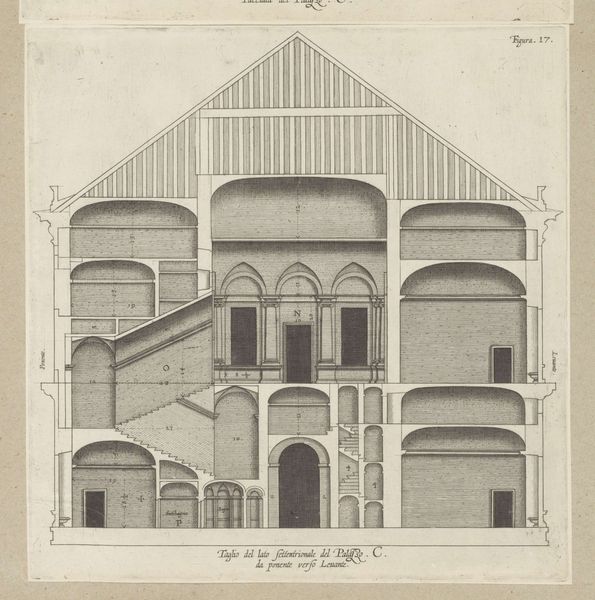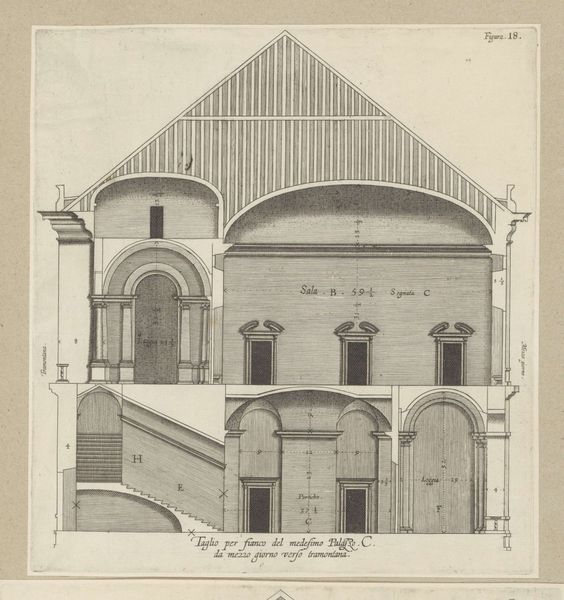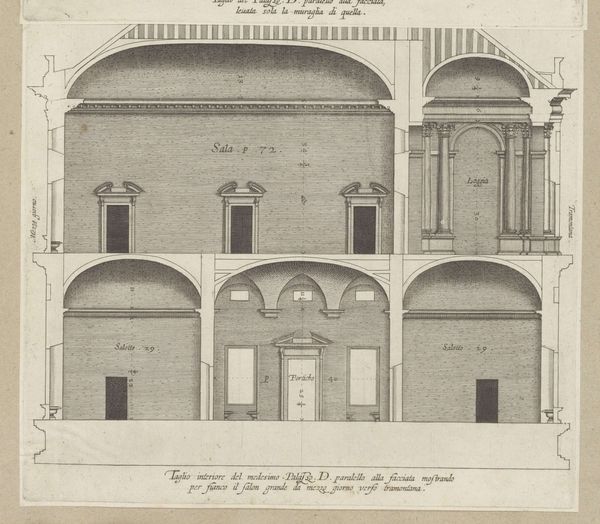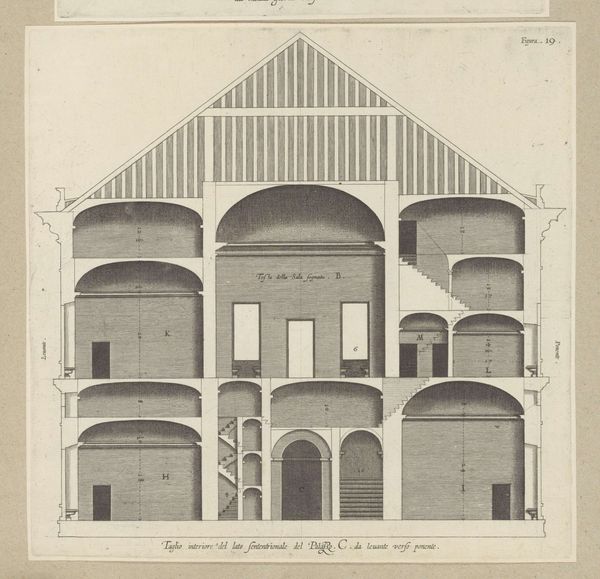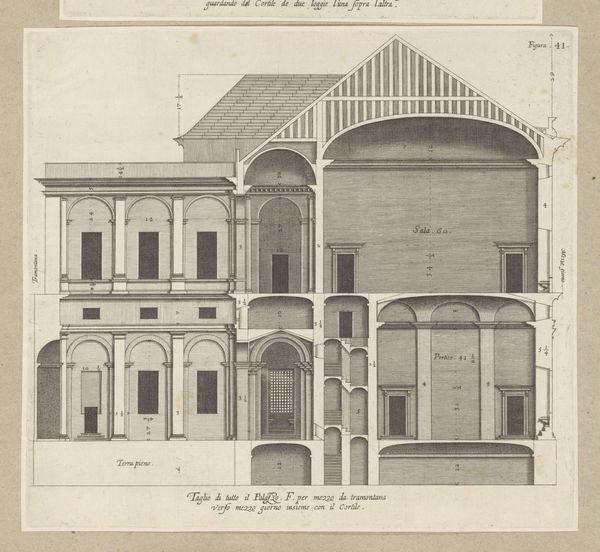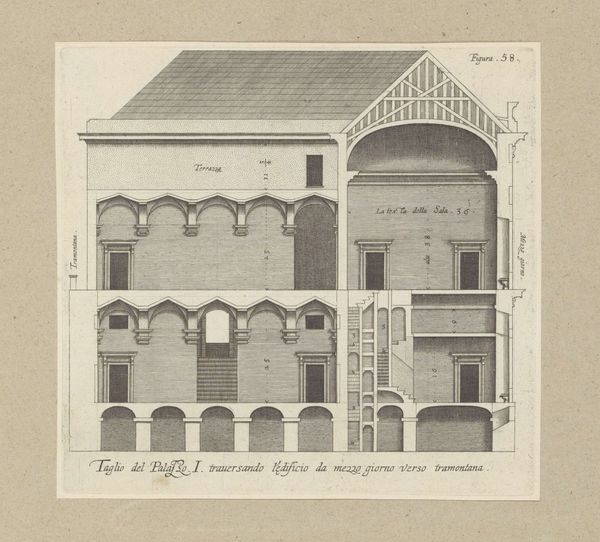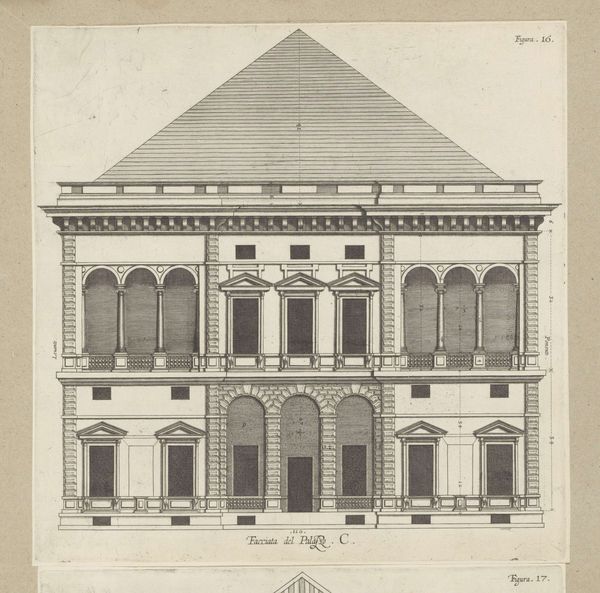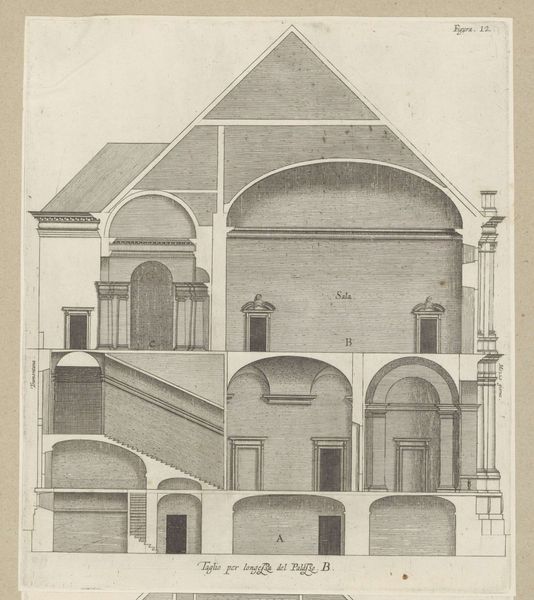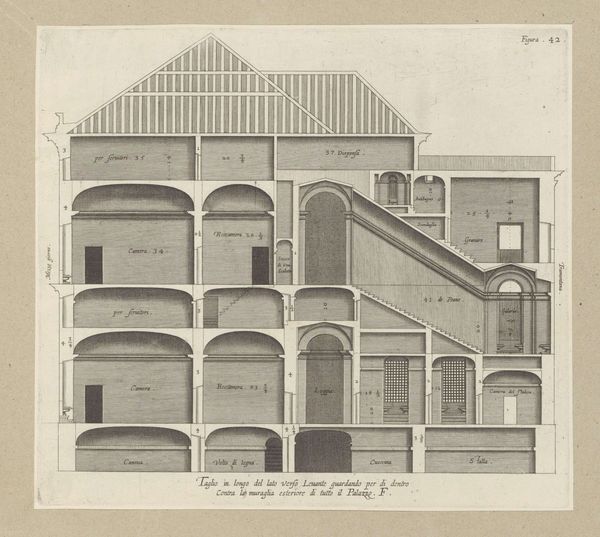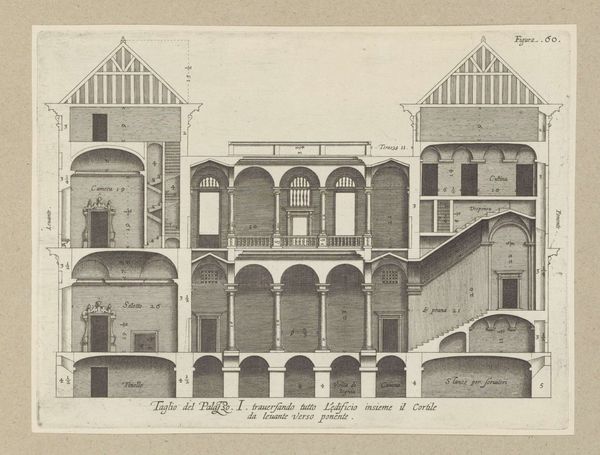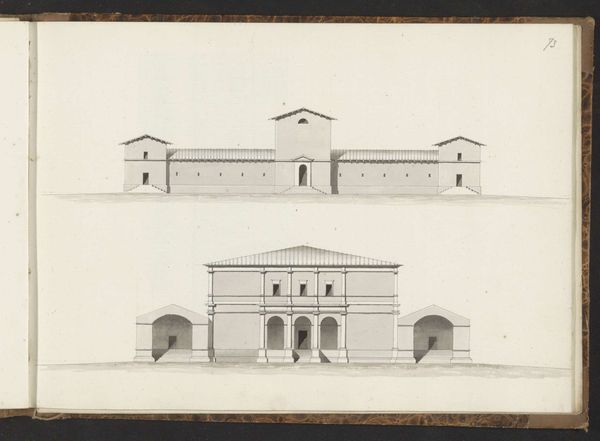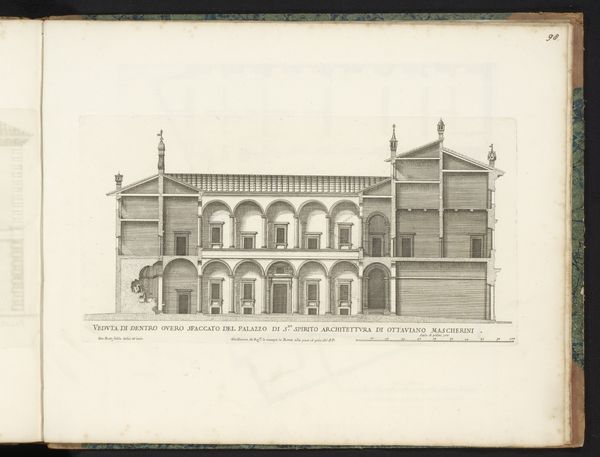
drawing, paper, engraving, architecture
#
drawing
#
baroque
#
perspective
#
paper
#
cityscape
#
engraving
#
architecture
Dimensions: height 310 mm, width 285 mm, height 583 mm, width 435 mm
Copyright: Rijks Museum: Open Domain
Curator: Here we have Nicolaes Ryckmans' "Cross-section of the Villa Grimaldi in Genoa" from 1622, held at the Rijksmuseum. It’s an engraving on paper, showcasing architectural elements with incredible detail. Editor: Wow, my first thought is it feels incredibly precise and strangely…theatrical. All those implied levels and arches—it’s like looking into a dollhouse for giants. I almost feel as if the building should rise up and become alive with people. Curator: Exactly. The Baroque style emphasizes this dramatic flair through the interplay of perspective and structured spaces. Notice how Ryckmans' engraving utilizes line and spatial division; the drawing transforms architecture into a calculated image intended to broadcast the Grimaldi's powerful engagement with the urban palazzi. Editor: Right, right... the social function always underpins artistic creation. All of that architectural design speaks volumes. What could you infer about the patron commissioning this piece based on Ryckman's emphasis of height, interior features, and vertical composition? What kind of statement were they trying to convey to the public? Curator: Absolutely. In a social and material context, the Grimaldi family would certainly have a political motivation, utilizing aesthetic features to signify their prestige and to establish influence. Note the presence of stairwells to encourage both circulation and engagement for invited guests. It's a machine meant for impressing potential allies and subordinates. Editor: I can practically hear the echoes of footsteps and hushed conversations. There’s an interesting sense of scale at play, too. Despite the diagrammatic style, Ryckmans conveys grandeur. That’s an interesting trick to use with an etching that's fairly modest in size. I wonder about Ryckmans' work and role in circulating representations of Genoese building during the period. Curator: Considering that he’s Dutch, he had a very high level of specialization; prints like these functioned as visual documents within a booming culture of knowledge transfer. Also, consider that engravings were essentially reproducible technology at this moment in the 17th Century. Ryckmans produced these to provide an immediate experience of villas and perspectives previously inaccessible to those who couldn't tour the area. Editor: Seeing the world mediated through Ryckmans' eyes…fascinating! He really captured an evocative essence that makes you feel like you're standing there on the marble steps. Curator: Indeed. By analyzing this Villa Grimaldi drawing we understand artistic skill married with social intent. It really opens our appreciation.
Comments
No comments
Be the first to comment and join the conversation on the ultimate creative platform.
